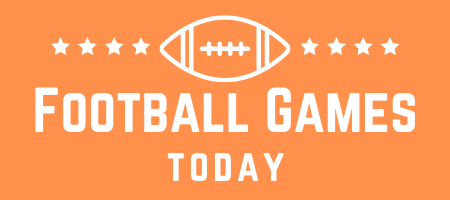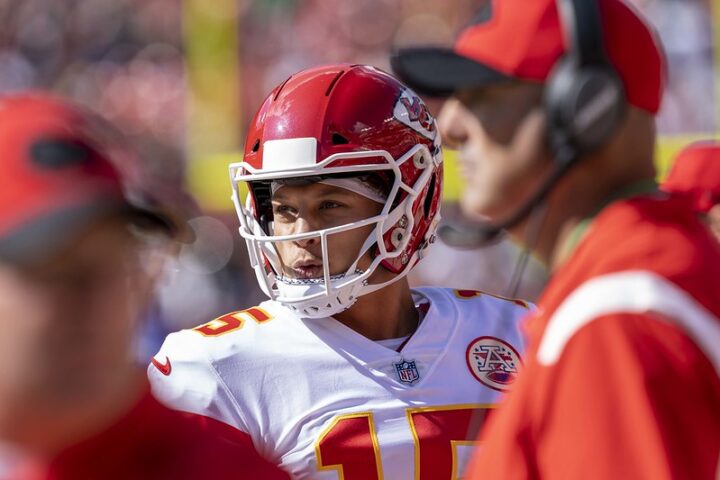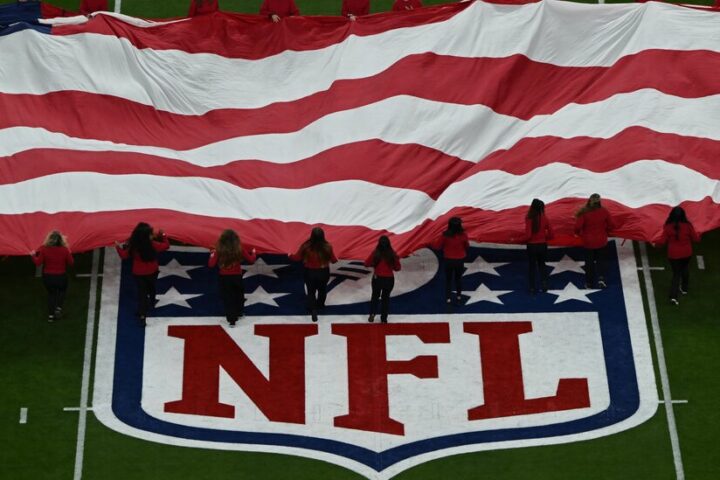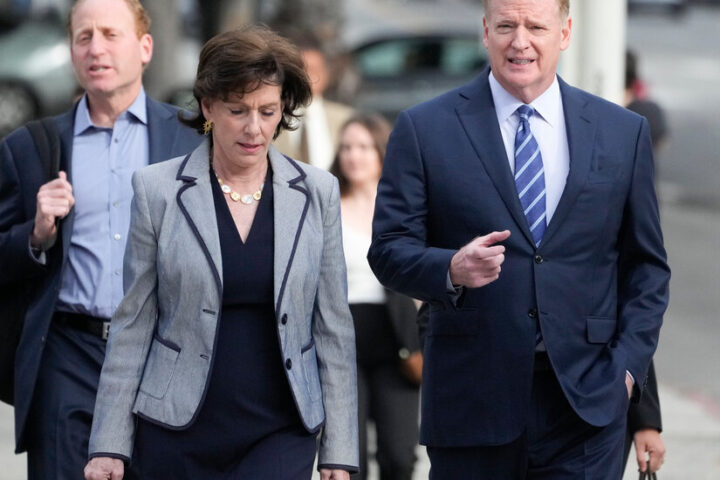While redraft will always remain the most popular form of fantasy football, there’s no denying the relatively rapid rise of dynasty fantasy football over the past decade. The fantasy community gets larger every year, which means there are more people looking for leagues.
If you’re looking to join a dynasty league for the first time, it’s important to choose the right one. Let’s discuss the optimal rules and settings for dynasty fantasy football league setups.
Dynasty Fantasy Football League Rules and Settings
If you put 1,000 fantasy managers in a room and asked them each to design their own league with their preferred rules and settings, you might legitimately get 1,000 different sets of settings.
There are fantasy football platforms out there with truly unlimited levels of customization. There’s no way I, or anyone, could cover every minute detail.
With that said, I am now in my third decade playing fantasy football. Over the years, I’ve played in formats I’ve loved and ones I’ve hated. That’s helped me curate my list of optimal rules and settings. Here are my preferred rules and settings for dynasty fantasy football leagues.
There is a whole lot of nuance and extra management required to sustain a long-term and successful dynasty league. But at its core, this is still fantasy football. And that comes with basic rules for things that occur in every type of league, regardless of format. As far as I’m concerned, these rules should be universal.
All leagues should have at least 12 teams, exactly six playoff teams, use FAAB waivers, and end in Week 17. I fully acknowledge the popularity of 10-team leagues. I can endorse them for beginners. But if you want a truly competitive league, 12 teams really is the perfect number.
Among other settings I find to be beneficial is the the two-win system. This has become increasingly popular in recent years, and openly praised by the Godfather of fantasy football, Matthew Berry.
The two-win system involves your traditional head-to-head weekly matchup, with a second win awarded if your team posts a top-half point total that particular week.
Fantasy football is a game that inherently has a lot of luck and variance. We want to craft our rules to minimize the luck factor as much as possible, but do so without removing the excitement that makes this game so much fun to play. The two-win system threads the needle as well as possible.
Roster Size and Starting Lineups
Dynasty rosters will always be larger than redraft rosters. The question is, by how much? A common argument against deep rosters is it depletes the waiver wire. Since these are my optimal rules and settings, I can be candid about the fact that I think that’s a bunch of malarkey.
I prefer rewarding fantasy managers for having more good players than other teams. As a result, I lean towards larger rosters. I prefer dynasty rosters of at least 25 players. Anywhere from 25-30 works for me.
As for starting lineups, I experience physical pain when I see the Yahoo or ESPN default lineups of 1 QB, 2 RBs, 2 WRs, 1 TE, 1 Flex, a kicker, and a defense. Redraft lineups should be much deeper than that. If your league doesn’t allow you to start at least six WRs/RBs (but really seven), you should look to add a Flex or two.
In dynasty leagues, deeper starting lineups are even more important. My ideal starting lineup would be 1 QB, 2 RBs, 2 WRs, 1 TE, and 4 Flex. No kicker or defense.
MORE: What is Devy Dynasty Fantasy Football?
Deeper lineups reward managers that put together the best rosters. In dynasty leagues, trades are happening all throughout the season. If a lineup is too shallow, it hinders the quality of trades to be made.
For example, if you’re only starting 2 RBs, 2 WRs, and 1 Flex, that means, in theory, only the top 60 running backs and wide receivers are in starting lineups. The top teams in a dynasty league will have pretty strong players on their benches. We don’t want that. We want those players getting into lineups. That way, there’s value in trading for an RB3 or a WR4. There’s value in upgrading your final Flex player because you can actually gain an edge.
It also benefits the rebuilding teams. If you need to blow it up, odds are, you don’t have very many starter-worthy players. But if your league has deeper starting lineups, you can still move those players to contenders who may need that second or third Flex to fill a hole or cover an injury.
Having a juggernaut roster is fun, but a dynasty league won’t survive if the bad teams have no real opportunity to turn it around. With deeper starting lineups, managers have more maneuverability in terms of constructing their rosters, which promotes more transactions.
Balance Is Key, Though
Think of starting rosters like a bell curve. At the front end of the curve, you have extremely shallow starting rosters. That places a larger emphasis on luck and randomness. When everyone is only starting their best players, it just comes down to whose players pop at the right time.
As you add more starting roster spots, having a complete roster matters more. But as you get to the tail-end of the curve, you’ll find yourself with too many starting spots. That reverts the balance back towards the luck side of it.
It’s equally problematic to have only the top players in lineups as it is if you have everyone starting a bunch of real life WR4s and RB3s. I’ve found that lineups allowing anywhere from 6-9 RBs/WRs is the sweet spot.
Scoring
Every league should be some form of points per reception format. I prefer half-PPR, but full-PPR is fine as well. As long as your dynasty fantasy football setup isn’t non-PPR, you’re all good.
While I haven’t experimented with this particular scoring format just yet, the idea of tiered PPR appeals to me. Tiered PPR adjusts the points per reception to account for the length of the reception. It’s designed to mitigate the reward fantasy managers get for a bunch of zero-yard receptions.
A typical tiered PPR format would be zero points for receptions that don’t gain any yards, 0.25 PPR for 1-5 yards, 0.5 PPR for 6-10 yards, 0.75 PPR for 11-15 yards, and 1.0 PPR for 16+. If you elect to go with tiered PPR, feel free to adjust these yardage brackets as you see fit.
Initial Start-Up Draft
Every dynasty fantasy football league kicks off with the initial start-up draft. This is where each manager drafts an initial roster from the entire player pool, just like a redraft league. But there are two important decisions to make regarding the initial start-up draft.
First, snake or auction? I prefer auction drafts in any fantasy format. When it comes to dynasty start-ups, I truly don’t think I would ever do a dynasty league that doesn’t use an auction.
If your dynasty league has the right people and is run well, in theory, it should exist for a very long time. You’re drafting a team of players that you may very well roster for their entire careers. It’s the ultimate test of predicting player performance. If you believe in a player, you shouldn’t be prohibited from getting him based on something as irrelevant as your name being picked out of a hat at the wrong time.
No one should be constrained by the randomness of draft position. You should have a fair opportunity to draft every player. Auctions provide that.
Second, there are two schools of thought as it pertains to when you should hold your start-up draft. Some dynasty leagues will have their start-up draft early in the offseason, perhaps even before the NFL draft. Others will schedule it during the normal draft season in late August/early September.
MORE: 350+ Funny Fantasy Football Team Names
I prefer to draft as late as possible. There are various different strategies managers can implement heading into Year 1. I would rather draft later to avoid managers being forced to punt the first season due to injuries.
One last decision to make about the start-up draft is how to handle the rookies. There are two ways you can handle it.
-
- You can include the rookies in your start-up draft, regardless of when you hold your draft. In this format, the rookies are in the player pool and can be drafted just like the veterans.
- You can have a separate rookie draft, which has to be a snake draft, at some point after the initial start-up. This can be immediately afterwards, or you can wait as long as you want (as long as you draft before the season starts).
In your initial start-up, managers will be able to draft rookie picks as opposed to the players themselves. Using 2023 as an example, rather than drafting Bijan Robinson, you would draft the rookie 1.01.
I prefer to draft after the NFL draft and include the rookies in the first year.
Annual Rookie Draft
Now, let’s get into the rookie draft. This should be five rounds and in a linear format (non-snake) determined by the reverse order of the previous season’s standings (or some variation of this to prevent tanking).
Each year, the rookie draft will occur at some point during the offseason and will include that season’s incoming rookie class. This draft can occur before or after the NFL draft. Obviously, the NFL draft and player landing spots can heavily impact fantasy values.
I strongly prefer to have the rookie draft after the NFL draft. While there is something to be said about predicting landing spots and how a player will perform, that’s not something I consider to really be part of the game. The goal in fantasy football is to predict how players will perform.
Every year, we know player situations when making decisions…except for rookies, at least for a couple of months. It’s an important input in evaluating player fantasy value, and I don’t subscribe to the notion that managers should be forced to guess where a player might end up.
The skill is in predicting performance, not getting lucky by a player landing on a team where he ends up with more value than expected. However, there is nothing inherently wrong with a league having its rookie draft prior to the NFL draft. It’s purely personal preference.
Waivers and Rookie Drafts
In-season waivers are the same as redraft, which we already discussed above. The primary difference in dynasty leagues is some leagues have year-round waivers (or close to it). Even in leagues with a moratorium period, managers will be able to add and drop players throughout most of the offseason.
You can choose to not have offseason waivers. My preference is to put a moratorium on waivers until after the rookie draft, which should ideally be held sometime after the NFL draft, but not too late into the summer.
MORE: Dynasty vs. Keeper Leagues
I prefer a rookie draft to be purely rookies. Unrosterd veterans will remain on waivers until after the rookie draft, at which point everyone will have their rosters for the upcoming season and can add and drop players according to waiver rules as they see fit.
Miscellaneous Rules and Settings
The above covers all the important areas for you to set up your dynasty fantasy football league rules and settings. Here are a few additional settings your league should have.
- At least four IR spots
- A five-player taxi squad (players that do not count toward your total roster size, but once you move them to your active roster, they cannot go back to the taxi squad)
- No regular season trade deadline (but playoff teams cannot make trades during the three playoff weeks)




